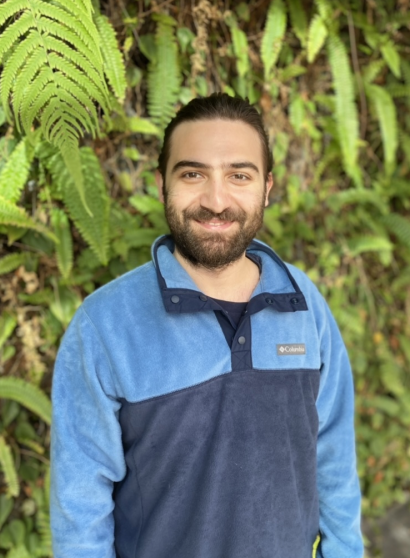In the realm of medical imaging, microbubbles – which are gas bodies coated by a layer of proteins or lipids and comparable in size to red blood cells – have emerged as effective agents for enhancing contrast. While their utility extends to targeted drug delivery and the monitoring of blood pressure in vivo, key knowledge gaps prohibit them from being commercially available for clinical applications beyond ultrasound imaging enhancement. Specifically, uncertainties surround how modifications in the shell and gas composition affect their material properties.
“In order to create the ultimate bubble, we need to control every parameter of the bubble so that we can use microbubbles for specific applications,” said third-year Mechanical Engineering Ph.D. candidate Mehmet Yapar.
In the novel study “Impact of Altered Shell and Gas Compositions on the Material Properties of Microbubbles,” Yapar and co-authors Roozbeh Hassanzaderh Azami and Professor of Mechanical and Aerospace Engineering Kausik Sarkar made significant strides in addressing this challenge by advancing understanding of microbubble properties. Yapar’s presentation of this research at the 2024 IEEE South Asian Ultrasonics Symposium (SAUS) earned him recognition as a finalist for the Best Poster Award.
Previous studies demonstrate that mixing the core gas with air can increase the performance of microbubbles, but what Yapar says remains unclear is why that happens and to what extent this is correct. In this study, the team used perfluorocarbons (PFCs) due to it being a highly stable gas when used in microbubbles to further investigate. Their findings indicate that combining the PFCs with air increases the shell elasticity of microbubbles, potentially increasing their stability.
Ideal microbubble properties vary depending on their application; for instance, to monitor blood pressure you want a high sub–harmonic response to the bubbles, which is not necessarily the case for drug delivery. Ultimately, this study showcases methods to develop microbubbles in a more stable and controlled manner, facilitating their commercial availability across diverse clinical uses. This advancement holds promise to provide an solution to reducing the toxicity of existing cancer treatment modalities by offering an alternative to chemotherapy.
“In order to achieve the required dose, since the efficiency is relatively low, you need to give quite a lot of medicine which causes unwanted side effects,” said Yapar. “If we can commercialize microbubble technology for cancer and tumor treatment, the efficiency of the drug delivery will increase significantly and reduce the intake of medicine that would otherwise harm other cells at such high doses.”
For the engineering community, the team’s findings represent a significant opportunity for tackling numerous clinical problems using ultrasound, a non-invasive imaging technology. Their study serves as a starting point for those interested in conducting research on ultrasound imaging agents as a clinical tool to extend their work on the feasibility of microbubbles. Yapar noted that even among professors, there is considerable surprise and interest in mircobubbles due to limited awareness. He expressed excitement about sharing his findings with the IEEE SAUS community, marking the first extension of their work to South Asia.
IEEE SAUS 2024 was hosted at the Indian Institute of Technology Gandhinagar from March 27 to 29. This hybrid event featured plenary talks, networking sessions, and oral and poster presentations of peer-reviewed papers. Yapar’s study was one of eight presenters whose poster was selected from among more than 100 participants across multiple categories. He was the only nominee from the Physical Acoustics category and from the United States.
Despite attending virtually, Yapar explained how he benefited from the experience, saying, “I benefited from it in the way that I got the ability to connect and meet with people in relatively the same field but still with some differences and from various countries, investigate collaborations, and expand our research availability outside of US.”


